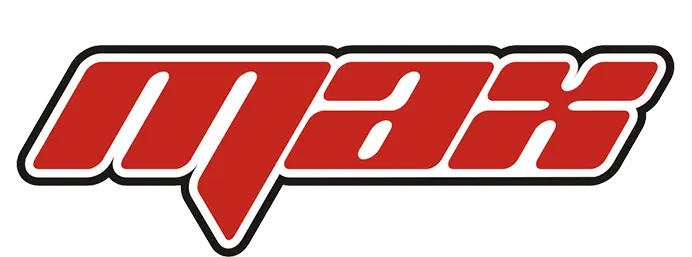The powder metal sintering process significantly enhances manufacturing efficiency. A primary advantage of this method is its exceptional material utilization, which often exceeds 95%, far surpassing traditional subtractive manufacturing techniques. This efficiency allows for the rapid, high-volume production of intricate parts. Furthermore, the benefits of sintering extend to the strength of the final product. Advanced sintering techniques can produce components with durability that rivals or even surpasses traditionally manufactured metals, often eliminating the need for secondary finishing operations.
Benefit 1: Maximize Material Efficiency and Minimize Waste
One of the greatest powder metallurgy advantages is its exceptional material efficiency. The process drastically reduces waste, making it a cost-effective and environmentally friendly choice for modern manufacturing. This efficiency stems from two core principles: creating parts with minimal excess and recycling unused material.
Near-Net-Shape Manufacturing in Powder Metallurgy
The powder metallurgy process excels at creating parts in their near-final, or “near-net,” shape. This method involves compacting metal powder into a mold and then heating it through sintering. The part emerges from the furnace very close to its finished dimensions. This approach contrasts sharply with traditional subtractive methods like CNC machining, which can waste over 50% of the raw material.
In some industries, like aerospace, traditional machining can have a “buy-to-fly” ratio of 17:1. This means 94% of the expensive raw material becomes waste. Powder metallurgy, however, boasts a scrap rate as low as 3%.
This efficiency makes powder metallurgy ideal for industries focused on lightweighting and sustainability, such as automotive and aerospace. Companies use this technique to produce complex components with precision. Common examples include:
- Gears and compressor blades
- Turbine disks
- Biomedical implants and surgical tools
The sintering step fuses the metal particles, creating a strong, solid component without carving away large amounts of material.
Reclaiming and Reusing Unused Metal Powder
The powder metallurgy process ensures that even loose powder is not wasted. During the sintering process, any unsintered powder can be collected and reused. Modern recovery systems are incredibly efficient. They can reclaim 80-90% of loose metal powder, significantly reducing material costs.
To guarantee quality, this reclaimed powder undergoes strict testing. Technicians use methods like metallography analysis and particle size distribution tests. This quality control ensures the recycled powder performs just as well as new material in the next sintering cycle. This closed-loop system makes powder metallurgy a truly sustainable and economical solution for producing high-performance parts.
Benefit 2: Accelerate Production Speed with the Powder Metal Sintering Process
The powder metal sintering process dramatically increases the speed of manufacturing. It allows companies to produce large quantities of identical parts quickly and efficiently. This speed comes from both the automated nature of the process and the reduction of extra finishing steps.
Achieving High-Volume Production Capability
The sintering process is ideal for mass production. Fully automatic compacting presses can produce parts at incredible rates, ranging from several hundred to thousands of units per hour. This high-volume output requires minimal operator intervention. The sintering stage then efficiently bonds the particles in large batches. This capability makes the process a perfect fit for demanding industries like the automotive sector. Manufacturers rely on sintering to produce a wide array of critical components with consistent quality.
Common Automotive Parts Made with Sintering:
- Gears and Sprockets: For transmissions and engine timing systems.
- Connecting Rods: Essential engine components that require high strength.
- Clutch Hubs: For smooth power transmission.
- ABS Sensor Rings: Critical for modern braking systems.
- Bearings: Self-lubricating bearings for various applications.
Reducing Costly Secondary Operations
One of the greatest powder metallurgy advantages is its ability to create parts in their final, or “net,” shape. The part emerges from the sintering furnace with precise dimensions and a smooth surface finish. This precision significantly reduces or even eliminates the need for expensive secondary operations.
Traditional manufacturing often requires extra steps like grinding, drilling, or deburring to meet final specifications. The sintering process avoids these issues. Since the metal powder is compacted into a precise mold and not cut from a larger block, it produces minimal burrs. This efficiency saves both time and money, streamlining the entire production workflow and delivering finished parts faster.
Benefit 3: Achieve Complex Geometries and Part Consolidation

Powder metallurgy unlocks remarkable design freedom, allowing engineers to create parts with intricate shapes that are often impossible with traditional manufacturing. This capability also enables the consolidation of multiple components into a single, stronger part, streamlining production and enhancing reliability.
Unlocking Design Freedom for Intricate Parts
One of the key powder metallurgy advantages is its ability to produce complex geometries. The process can form parts with features like internal channels and undercuts directly from the mold. For example, manufacturers use Metal Injection Molding (MIM), a type of powder metallurgy, to create components like an EPR flow block with internal 90-degree channels for gas management. This level of detail is extremely difficult to achieve with casting or forging.
However, designers must consider certain guidelines to ensure success.
To maximize tool life and part integrity, designs should avoid sharp corners and excessively thin walls. Uniform wall thickness is also important, as it helps the part densify evenly during sintering and prevents defects. Following these principles allows for the consistent production of highly complex parts.
Consolidating Multiple Components into a Single Part
Powder metallurgy excels at combining several individual pieces into one solid component. This part consolidation offers significant benefits for manufacturers.
- It eliminates the need for welding, brazing, or fastening separate parts together.
- It drastically reduces assembly time and associated labor costs.
- It improves product reliability by removing joints and seams, which are common points of failure.
This process also makes it possible to create functionally graded materials (FGMs). Manufacturers can strategically mix different metal powders, such as stainless steel and copper, within a single part. This technique creates components with varied properties across their structure, like a part that is hard on the outside but ductile on the inside. This advanced capability results in more robust, higher-performing products tailored to specific functional needs.
Benefit 4: Lower Overall Manufacturing and Energy Costs
The powder metallurgy process provides significant financial advantages by reducing energy use and operational expenses. The efficiency of the sintering process itself, combined with durable tooling, leads to substantial long-term savings. This makes it an economically smart choice for high-volume production and contributes to lower costs overall.
How Sintering Reduces Energy Consumption
The sintering process is inherently more energy-efficient than many traditional methods. Modern continuous furnaces, in particular, optimize energy use. These furnaces maintain a constant high temperature, which avoids the energy waste from repeated heating and cooling cycles found in older batch-style furnaces. A continuous sintering furnace can achieve a thermal efficiency of 45%–65%, a major improvement over the 30%–50% efficiency of batch furnaces. This steady-state operation is key to saving energy during large-scale manufacturing.
The table below highlights the operational differences:
| Feature | Batch Furnace | Continuous Furnace |
|---|---|---|
| Operation | Processes materials in separate loads | Processes materials in an uninterrupted flow |
| Energy Use | Less efficient for large scale due to reheating | More efficient for large scale by maintaining heat |
This advanced approach to sintering directly translates into reduced energy bills and a smaller environmental footprint.
Lowering Tooling and Long-Term Labor Costs
Powder metallurgy tooling is remarkably durable, which reduces long-term expenses. The dies and punches used to compact metal powder are built to last for hundreds of thousands of cycles before needing replacement. This longevity minimizes downtime and tooling replacement costs. The automated nature of the sintering process also reduces the need for constant human oversight, lowering labor costs.
- Simple Parts (e.g., Bearings): Tooling can last for 300,000 to 500,000 cycles.
- Complex Parts (e.g., Oil Pump Rotors): Tooling can endure around 100,000 cycles.
This combination of long-lasting tools and automation makes the entire production workflow more cost-effective. Companies benefit from predictable maintenance schedules and a more efficient use of their workforce.
Benefit 5: Enhancing Part Strength and Performance Through Sintering

The powder metal sintering process delivers more than just efficiency; it produces parts with exceptional strength and reliable performance. This is achieved through remarkable dimensional control and the ability to engineer specific material properties for durability. The final performance of sintered parts often rivals that of traditionally machined components.
Superior Dimensional Tolerance and Consistency
The sintering process offers superior precision and consistency across high-volume production runs. Its precise forming capabilities come from strict control over every stage. Manufacturers use advanced sensors to monitor critical parameters like temperature and pressure in real time. This ensures each part experiences identical conditions, leading to uniform shrinkage and final dimensions. This consistent performance is vital for complex assemblies.
Predictive modeling also plays a key role. Engineers use advanced software to predict material shrinkage with high accuracy, allowing them to design molds that compensate for this change. This meticulous approach ensures excellent part-to-part consistency and boosts overall product performance.
| Technique/Company | Shrinkage Prediction Accuracy |
|---|---|
| Höganäs AB (Digital Metal®) | Up to 95% |
| Advanced Simulation Tools | High accuracy |
Controlled Material Properties for Durability
Powder metallurgy provides outstanding control over a part’s final properties, directly enhancing its strength and performance. Engineers carefully manage density during compaction and sintering to meet specific performance targets. Techniques like high-temperature sintering or copper infiltration reduce porosity, creating denser, stronger parts. This control over density is fundamental to achieving the desired strength and performance.
Furthermore, post-sintering treatments can significantly boost a component’s strength.
- Heat Treatment: This process enhances the strength, hardness, and fatigue resistance of sintered parts.
- Sinter Hardening: An accelerated cooling process after sintering provides heat-treated properties, increasing hardness and strength for better performance.
This ability to select specific alloys and apply targeted treatments makes sintering ideal for high strength structural applications. The final product’s performance is a direct result of this controlled and adaptable manufacturing method, which delivers consistent strength and superior performance.
The powder metal sintering process delivers superior manufacturing efficiency. Near-net-shape manufacturing drastically cuts material waste and costs. Powder metallurgy achieves high-speed output for complex parts. The sintering process reduces energy use and the need for secondary machining. Ultimately, powder metallurgy is a powerful solution. It produces parts with excellent strength and performance. The powder metal sintering process makes powder metallurgy a smarter choice. Sintering is key to the success of powder metallurgy. The sintering process, a core part of sintering, is why the powder metal sintering process is so effective.
FAQ
What are the main advantages of powder metallurgy?
The primary advantages include high material efficiency, often over 95%, and rapid production speeds. This method reduces waste and lowers manufacturing costs. It is a smart choice for many industrial applications.
How does the sintering process work?
The sintering process heats compacted metal powder to a temperature just below its melting point. This heat fuses the metal particles together. The result is a solid, strong part with controlled density for various applications.
What are some common applications for sintered parts?
Sintered parts have many common applications. Manufacturers use them for automotive gears, connecting rods, and bearings. Other applications include components for power tools and home appliances. Medical device applications also benefit from this technology.
Is powder metallurgy suitable for all metal applications?
Powder metallurgy is ideal for high-volume production of small, complex parts. It is less economical for very large components or single prototypes. The suitability depends on the part’s design, material, and required production quantity.
